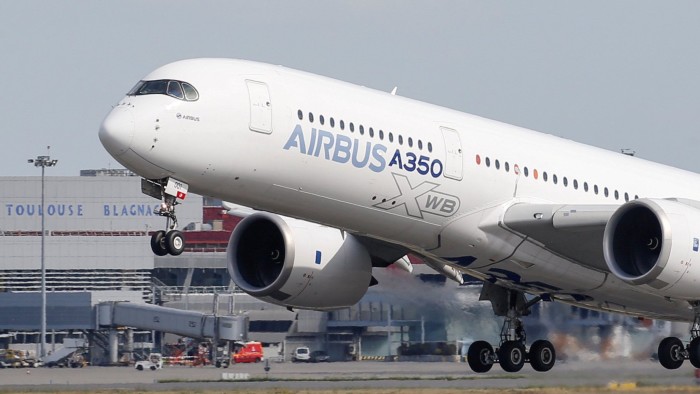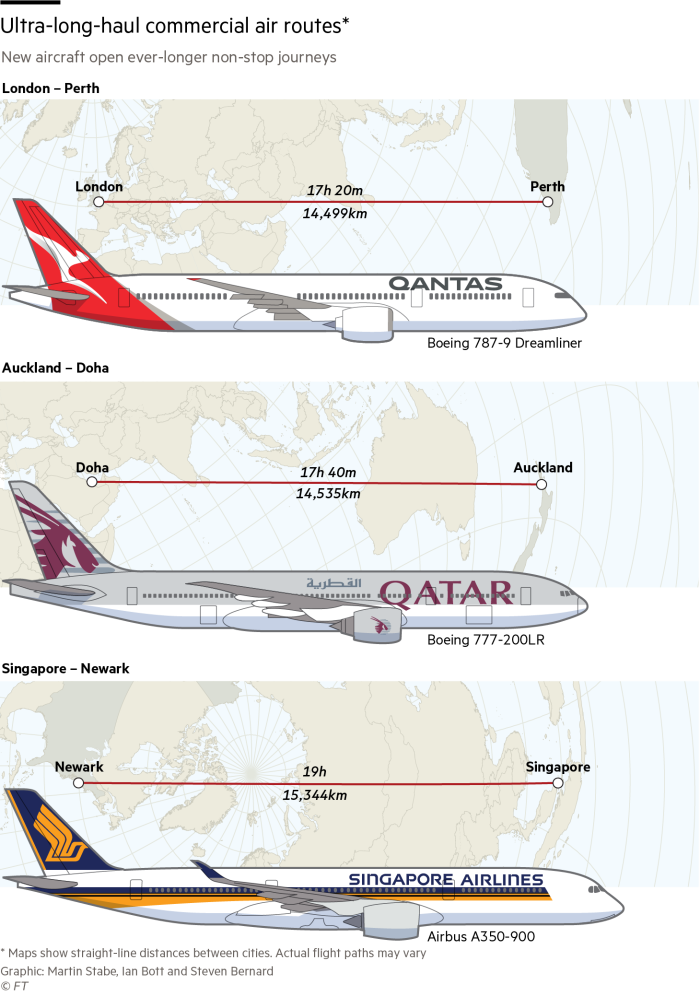Australia’s Qantas chooses Airbus over Boeing for longest routes

Roula Khalaf, Editor of the FT, selects her favourite stories in this weekly newsletter.
Qantas Airways has selected the Airbus A350-1000 as the preferred aircraft for the world’s longest direct flights, including routes between Sydney and London, following a competition with Boeing.
But the Australian airline has delayed a final decision on whether to push ahead with its Project Sunrise plan aimed at stretching the technological limitations of ultra-long-haul flying until March, as it negotiates a critical industrial relations agreement with pilots.
“We’ll only commit to this investment if we know it will generate the right return for our shareholders given the inherent commercial risks,” Alan Joyce, Qantas chief executive, said on Friday.
“We’ve done a lot of work on the economics and we know the last gap we have to close is some efficiency gains associated with our pilots,” Mr Joyce said. “We’re offering promotions and an increase in pay but we’re asking for some flexibility in return, which will help lower our operating costs.”
Project Sunrise is a plan by Qantas to operate nonstop commercial flights from the east coast of Australia to London, New York, Paris, Frankfurt and destinations in Latin America and Africa, such as Cape Town and Rio de Janeiro.
The Australian carrier, which already operates a Perth to London route — one of the world’s longest — using a Boeing 787-9 Dreamliner, is aiming to woo premium passengers from rival airlines operating stopover hubs in the Middle East and Asia.

Qantas had hoped to make a final aircraft purchasing decision for Project Sunrise by the end of 2019 but negotiations with pilots over a new industrial relations deal covering the longer flights have not concluded.
These discussions are centred on achieving the productivity and efficiency gains, including the ability to use the same pilots on A350 aircraft and the airline’s existing fleet of Airbus A330s, required to make the business case for Sunrise to stack up.
Two years ago Qantas challenged Airbus and Boeing to design jets capable of flying further than 17,000km, which requires 20 hours in the air. It is seeking to buy 12 aircraft for delivery in the first half of 2023 when it wants to begin operating these ultra-long-haul routes.
Qantas’ choice of a longer range version of the Airbus A350-1000, which had a list price of $366m in 2018, over a version of Boeing’s 777, provides the European manufacturer with a public relations victory over its US rival.
“Since the grounding of the Boeing 737 Max there is little doubt that Airbus has benefited in terms of its branding and marketing,” said Chrystal Zhang, associate professor of aerospace at RMIT University in Melbourne. “It is also winning the race for new aircraft orders.”
Airbus will modify its A350-1000 aircraft to fit Qantas’s ultra-long-haul specifications by adding an additional fuel tank and slightly increasing the maximum take off weight of the aircraft.
Peter Harbison, executive chairman of CAPA — Centre for Aviation, a Sydney-based consultancy, said Qantas’ decision to go with Airbus was not surprising, given Boeing’s preoccupation with the Max.
“[Boeing] would have been hard pressed to dedicate considerable time to a relatively small order like this at such a difficult time,” he said.
Comments